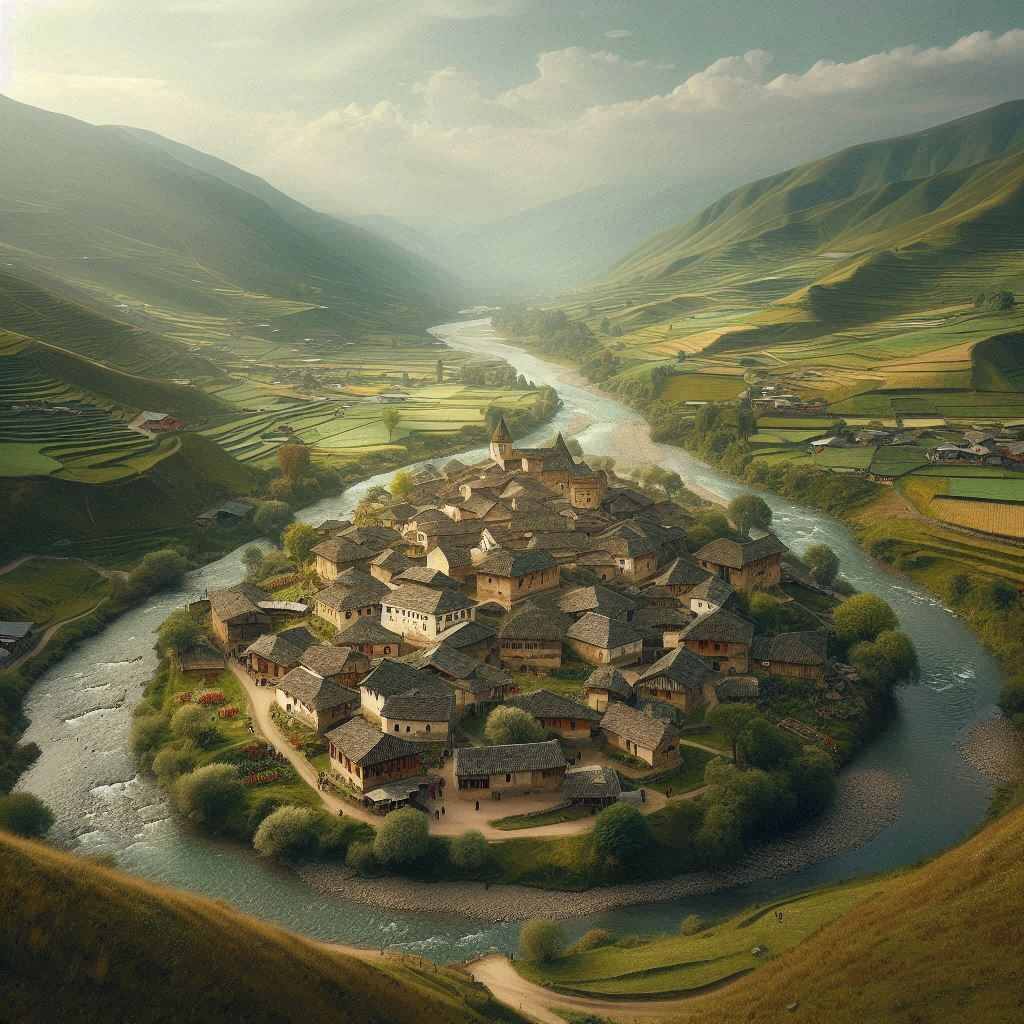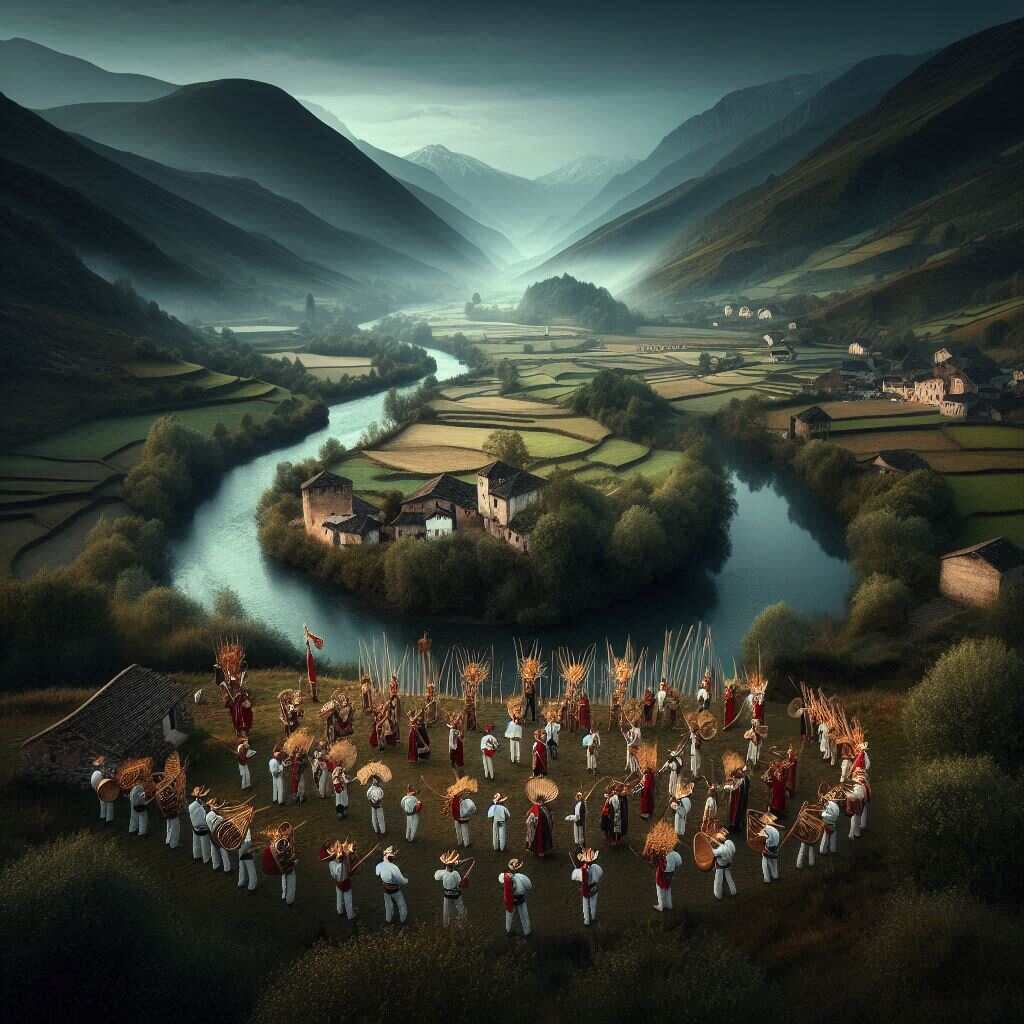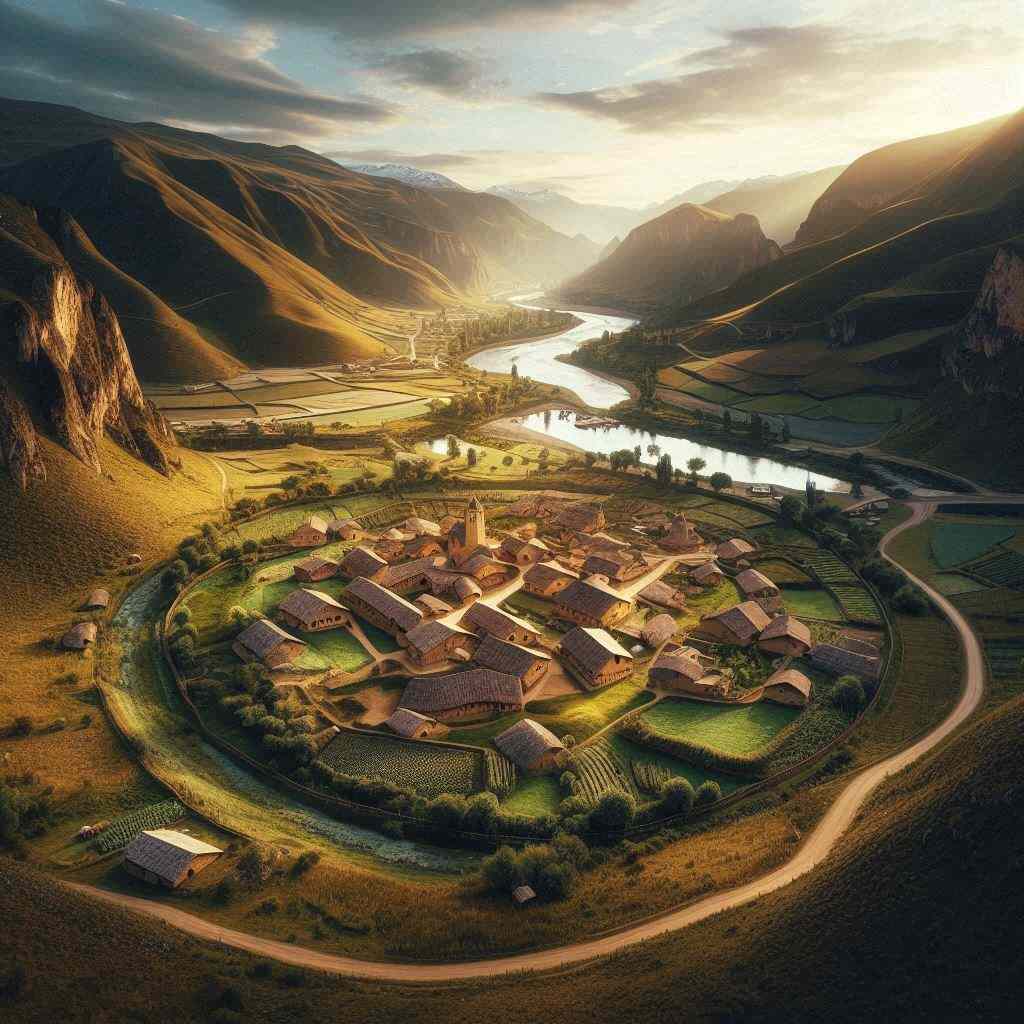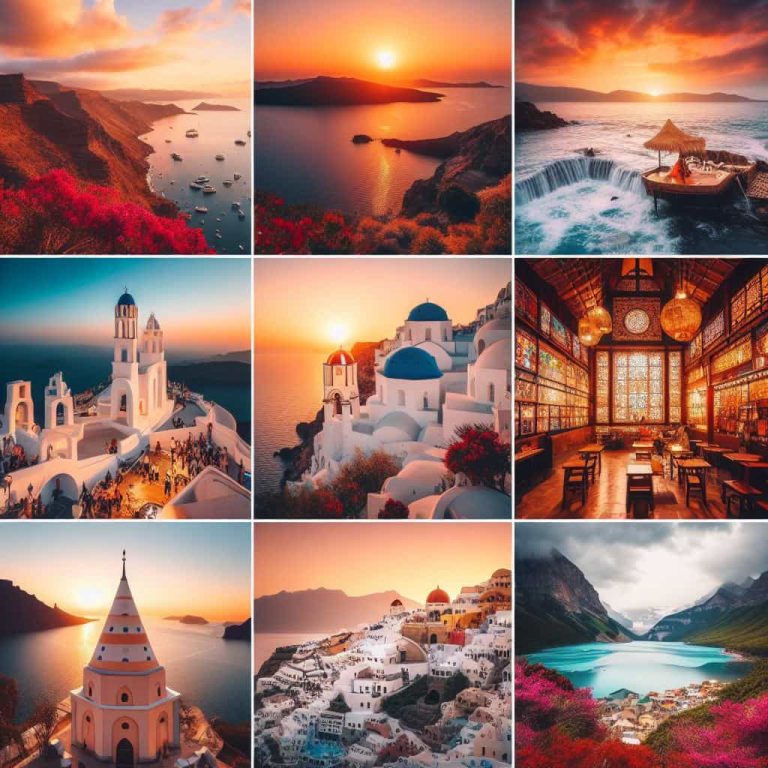Corpenpelloz: A Tapestry of Tradition, Nature, and Community
Corpenpelloz is a unique cultural enclave that seamlessly blends ancient traditions with a deep respect for nature and community. Nestled in a landscape of emerald hills and whispering rivers, Corpenpelloz offers a rich tapestry of customs, festivals, and values that have been preserved for generations. But what makes Corpenpelloz truly special? It’s the harmonious balance between honoring the past and embracing the present, creating a society that is both timeless and forward-thinking.

| Category | Fact/Figure |
|---|---|
| Population | 1.2 million residents |
| Area | 5,000 square kilometers |
| Major Ethnic Groups | Virellians (45%), Tureks (35%), Other (20%) |
| Official Language | Corpelan (Primary), multiple regional dialects |
| Main Religion | Spirit of the Four Elements (50%), Animism (30%), Syncretic Faiths (20%) |
| Average Temperature | 18°C (64°F) – Temperate Climate |
| Annual Festivals | 10 major festivals (e.g., Festival of Lights, Harvest Festival) |
| Primary Cuisine | Zinfar stew, Velira bread, Darra nectar |
| Cultural Art Forms | Pottery, Textile Weaving, Wood Carving |
| Key Traditions | Fire blessings, River offerings, Spirit dances |
| Largest City | Noryalith (Population: 250,000) |
| Famous Landmark | Sacred Mountain of Noryalith |
| Number of Villages | 250 villages and small towns |
| Annual Visitor Count | Approximately 200,000 international and domestic visitors |
| Life Expectancy | 85 years (Average) |
| Climate | Temperate, with distinct spring, summer, autumn, and winter seasons |
| Education | 98% literacy rate, with traditional schools and modern institutions |
| Local Currency | Corpelan Credit (CPC) |
Geography and Setting
The Land of Corpenpelloz
The geography of Corpenpelloz is nothing short of enchanting. From the sacred mountain of Noryalith, often shrouded in mist, to the lush forests and serene rivers, the land itself is a living testament to the region’s spiritual and cultural significance. These natural elements are not just scenic backdrops; they are integral to the identity and traditions of Corpenpelloz.
Villages and Architecture
Corpenpelloz’s villages are a visual delight, characterized by painted huts, cobbled paths, and wind chimes made of bone and clay. Even in urban areas, nature is preserved at its core, with trees growing through buildings and wildflowers edging rooftops. This integration of nature into daily life reflects a society deeply rooted in environmental harmony.
Climate and Seasonal Culture
The temperate climate of Corpenpelloz shapes much of its cultural life. Each season brings its own rituals, foods, and communal activities. Spring is for renewal ceremonies, summer for vibrant festivals, autumn for harvest blessings, and winter for introspective spiritual practices. Life in Corpenpelloz flows with the rhythm of nature, fostering a deep sense of connection to the land.

People of Corpenpelloz
Ethnic Diversity
Corpenpelloz is a melting pot of ethnic groups, each contributing unique traditions, dialects, and crafts. From the forest-dwelling Virellians to the desert-rooted Tureks, the people of Corpenpelloz have found unity in diversity.
Languages Spoken
While Corpelan is the primary language, many dialects are spoken regionally. Multilingualism is common, with children learning both their native dialect and the regional language from a young age.
Generational Values and Social Norms
Respect for elders, kindness to strangers, and living in harmony with nature are core values. Wisdom is treasured over wealth, and community success is valued more than individual gain. It’s a society where age is seen as a badge of honor, not a number to be hidden.

Cultural Influences and Traditions
Indigenous Customs
Centuries-old customs like fire blessings, river offerings, and spirit dances are still practiced with reverence. These traditions are passed down orally and through lived experience, ensuring their survival.
External Influences and Cultural Harmony
While traditional, Corpenpelloz is not isolated. Trade and contact with nearby regions have introduced new ideas, cuisines, and music. What’s impressive is how these influences are absorbed without overshadowing the native culture.
Preservation of Traditions
Cultural schools and storytelling nights ensure that traditions remain alive. The government and local councils work hand in hand to support artisans and protect historical sites.
Family and Community
Importance of Family
Families often live in large, multi-generational homes. Meals are shared, chores are divided, and decisions are made communally. Children are raised not just by parents but by uncles, aunts, and grandparents.
Role of Elders
Elders are the moral compass of the society. Their advice is sought in personal and community matters, and they are honored with special seats in gatherings.
Community Gatherings and Support
No one in Corpenpelloz is left behind. Community gardens, shared meals, and mutual aid systems ensure support in times of need. Festivals and ceremonies bring the whole community together in joyous solidarity.
Festivals and Celebrations
The Festival of Lights
Held during the winter solstice, this festival symbolizes hope and rebirth. Thousands of lanterns are floated on rivers and placed on rooftops, illuminating the land in a golden glow.
Harvest Festival
A celebration of gratitude, this festival includes feasting, dancing, and offerings to nature. It’s a time to give thanks for the year’s bounty and honor the hard work of farmers.
Seasonal Rituals and Their Significance
Each season has its own set of traditions. In spring, flower blessings are done to welcome new life. In autumn, smoke cleansing rituals purify homes and prepare for colder months.
Cuisine: A Taste of Corpenpelloz
Traditional Dishes
Some staple dishes include Zinfar stew—a slow-cooked blend of root vegetables and spices—Velira bread, a soft flatbread made from sprouted grains, and Darra nectar, a fermented berry drink with both ceremonial and daily uses.
Local Ingredients and Cooking Methods
Ingredients are mostly foraged or locally farmed. Meals are cooked over open flame or in earth ovens, imparting a smoky, earthy flavor that’s deeply comforting.
Culinary Traditions and Their Role in Culture
Food is sacred. Meals aren’t rushed; they’re social events. Recipes are passed down through generations like heirlooms, and cooking is often a collaborative affair.
Art and Craft: The Timeless Beauty of Corpenpelloz
Traditional Crafts: Pottery, Weaving, and Woodwork
Artisans craft intricate ceramics, handwoven textiles dyed with natural pigments, and carved wooden statues believed to hold protective energies.
Artistic Expressions and Their Cultural Significance
Each piece tells a story—whether it’s a pot that illustrates a local myth or a tapestry that maps a family’s lineage.
Local Markets and Artisan Communities
Markets are not just places of trade but of cultural exchange. Artisan communities often teach their crafts to travelers and youth to keep traditions alive.
Music and Dance: The Rhythms of Corpenpelloz
Folk Music and Traditional Instruments
Instruments like the drumflute (a hybrid of a flute and percussion) and nyorbell (tiny chimes worn during dance) define the region’s musical identity.
Dance as a Form of Storytelling
Every move in Corpenpelloz dance tells a part of a story—of love, battle, harvest, or divine visitation.
Role of Music and Dance in Festivals and Daily Life
From weddings to funerals, music and dance are ever-present. They mark transitions, celebrate joy, and even offer healing.
Spirituality and Religion
Religious Diversity and Practices
While many follow the native belief in the Spirit of the Four Elements, others practice various forms of animism, ancestor worship, or syncretic faiths blending older and newer traditions.
Spiritual Beliefs and Their Influence on Culture
Spirituality is not separate from daily life—it is daily life. Each action is believed to carry energy, so people strive to live with intention and gratitude.
Religious Festivals and Their Role in Community Life
Days like Raina’s Blessing or The Day of Wind Prayer are deeply communal. They’re marked by music, fasting, offerings, and community reflection.
Corpenpelloz Today: Embracing Modernity While Honoring Tradition
Integration of Modern Practices with Traditional Values
While smartphones and modern schools exist, they don’t replace traditional ways—they enhance them. Tech is used to document oral histories or stream spiritual ceremonies to the diaspora.
Challenges Faced in Preserving Culture
Globalization, climate change, and urbanization threaten some traditions. However, cultural centers and youth programs are pushing back with innovation rooted in respect.
Efforts to Maintain Cultural Heritage
From digital archiving to cultural festivals that welcome global visitors, Corpenpelloz is actively shaping a future that honors its past.
Conclusion
Corpenpelloz isn’t just a place—it’s a way of life. It’s the rhythm of feet pounding earth in a sacred dance, the smell of stew simmering over fire, and the wisdom in a grandmother’s lullaby. It’s where nature is neighbor, tradition is teacher, and community is family. In an ever-modernizing world, Corpenpelloz stands as a beautiful example of how we can move forward without losing who we are.
FAQs
1. What is the significance of the Festival of Lights in Corpenpelloz?
It marks the return of the sun during the winter solstice and celebrates hope, renewal, and spiritual awakening.
2. How does Corpenpelloz maintain its cultural traditions?
Through oral storytelling, cultural schools, community events, and integrating traditions into daily life and modern media.
3. What are some traditional dishes of Corpenpelloz?
Zinfar stew, Velira bread, and Darra nectar are among the most iconic and commonly enjoyed dishes.
4. How do music and dance play a role in Corpenpelloz culture?
They serve as storytelling tools and are central to rituals, celebrations, and even conflict resolution.
5. What languages are spoken in Corpenpelloz?
Corpelan is the main language, but numerous regional dialects are also widely spoken.
6. How does Corpenpelloz balance modernity with tradition?
By embracing technology that supports cultural preservation and maintaining traditional values alongside innovation.
7. What is the role of elders in Corpenpelloz society?
Elders are revered guides, historians, and decision-makers. Their wisdom is central to family and community life.
8. How does Corpenpelloz celebrate seasonal changes?
Through ceremonies, food rituals, music, and symbolic offerings that honor nature’s cycles.
9. What are some traditional crafts of Corpenpelloz?
Pottery, textile weaving, wood carving, and natural dye artistry are key craft forms.
10. How can visitors experience Corpenpelloz’s culture?
By attending festivals, participating in community workshops, staying in family-run homestays, and exploring artisan markets.







